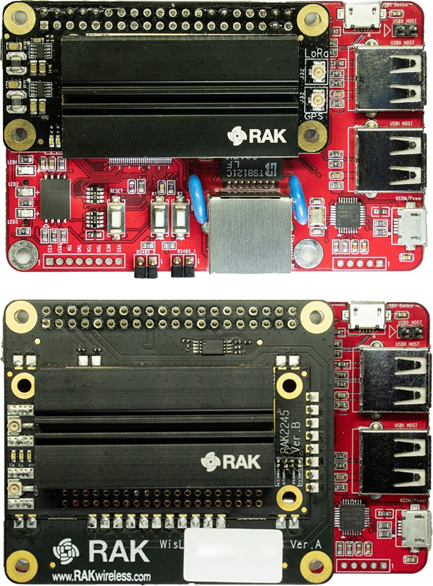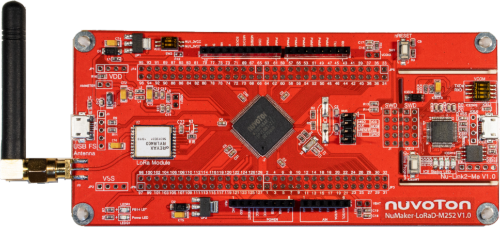Things you need to know about LoRa
What is LoRa?
LoRa is a Low-Power Wide-Area Network (LPWAN) communication technology; it is an ultra-long-distance wireless transmission solution based on spread spectrum technology. Currently, LoRa mainly operates on free frequency bands worldwide, including 433, 868, 915 MHz, etc.
The outstanding features of LoRa include:
- Long transmission distance
- Low operating power
- Many network nodes
What's the secret to the low power consumption of LoRa?
In traditional communication systems, ultra-long distance is relative to power consumption. Once the transmission power drops, the transmission distance will be closer. So how did LoRa solve this contradiction and can complete ultra-long-distance and low power transmission simultaneously? The main reason is that LoRa increased the receiver's sensitivity and gained a robust link budget from this, so high transmission power is not required.
The receiving sensitivity of LoRa is thanks to the direct-sequence spread spectrum technology. LoRa adopted high spreading factors and obtained higher signal gain from it. Generally, the FSK signal-to-noise ratio needs to be 8dB, and LoRa only requires it to be -20dB.
Does LoRa meet the requirements of the No. 52 files of the Ministry of Industry and Information Technology of the People's Republic of China?
On November 28, 2019, the Ministry of Industry and Information Technology announced: "Announcement No. 52, 2019, of the Ministry of Industry and Information Technology of the People's Republic of China." The announcement further regulates micro-power short-distance radio transmission equipment (after this referred to as micro-power equipment).
LoRa complies with all requirements of Announcement No. 52, 2019, of the Ministry of Industry and Information Technology of the People's Republic of China:
- Limited to small-scale networking applications such as buildings, residential communities, and villages;
- Limited to single-channel transmission at any given time;
- Civil metering equipment should be equipped with an anti-interference function;
- Avoid interfering with local radio and television stations;
- Comply with transmission power limit and transmission power spectral density limit;
- The duration of a single transmission must not exceed 1 second;
- The occupied bandwidth must not exceed 500kHz.
Is LoRa secure?
The three significant advantages of the LoRa network – "self-organized, secure, controllable."
LoRa can be demodulated at 20dB below the noise, making it difficult for standard equipment to detect and interfere with LoRa signals. For the network layer, LoRa collects, processes, and saves data locally. Data is fully controlled by the network owner and will not leave the private network. For the application layer, security management for the application layer can work with the network layer to realize the application layer's overall security. For customers that use the LoRaWAN protocol, the LoRaWAN protocol is encrypted on the network layer and application layer and provides robust terminal-to-terminal protection.
Features of Nuvoton LoRa solutions
Nuvoton provides a complete set of LoRaWAN ecosystems; this ecosystem provides a sensor device development platform with LoRaWAN standard communication protocol and LoRaWAN Gateway. This ecosystem can fully comply with the LoRaWAN Class A/C communication protocol.
The supported frequency bands are as shown in the table
|
|
CN470 |
EU868 |
US915 |
|
LoRaWAN Gateway |
|
● |
● |
|
LoRaWAN Sensor Device |
● |
● |
● |
The following are detailed specifications
LoRaWAN Gateway
- Linux OS Ver4.4
- Support The Thing Network
- RAK7246G 868/915MHZ
- 1Gb SPI NAND
- RS485 x2
- SD Card
- 10/100Mb Ethernet
- USB HS Host support USB Wi-Fi
- NUC980DK61Y
- ARM926EJ-S 300MHz
- 64MB DDR inside

LoRaWAN Sensor Device
- ARM Mbed OS 5
- Support Arm Mbed OS or LoRaMac-node LoRa device stack
- Support LoRaWAN Class A/C
- REYAX LoRa Module RYLR890 / RYLR400
- Support 868-915MHz / 433-470MHz
- M252 Series
- Cortex-M23 48MHz
- 256 KB Flash / 32 KB SRAM
- 12bit ADC x 16
- SPI x 5
- UART x 7
- I2C x 5
- USB FS Device
